The second in my “Archive of Childhood” series. Trigger warning: images of a racist doll appear below. I’ve included it because this post is about racism, and I didn’t feel I could talk about the racism without displaying the doll in question.
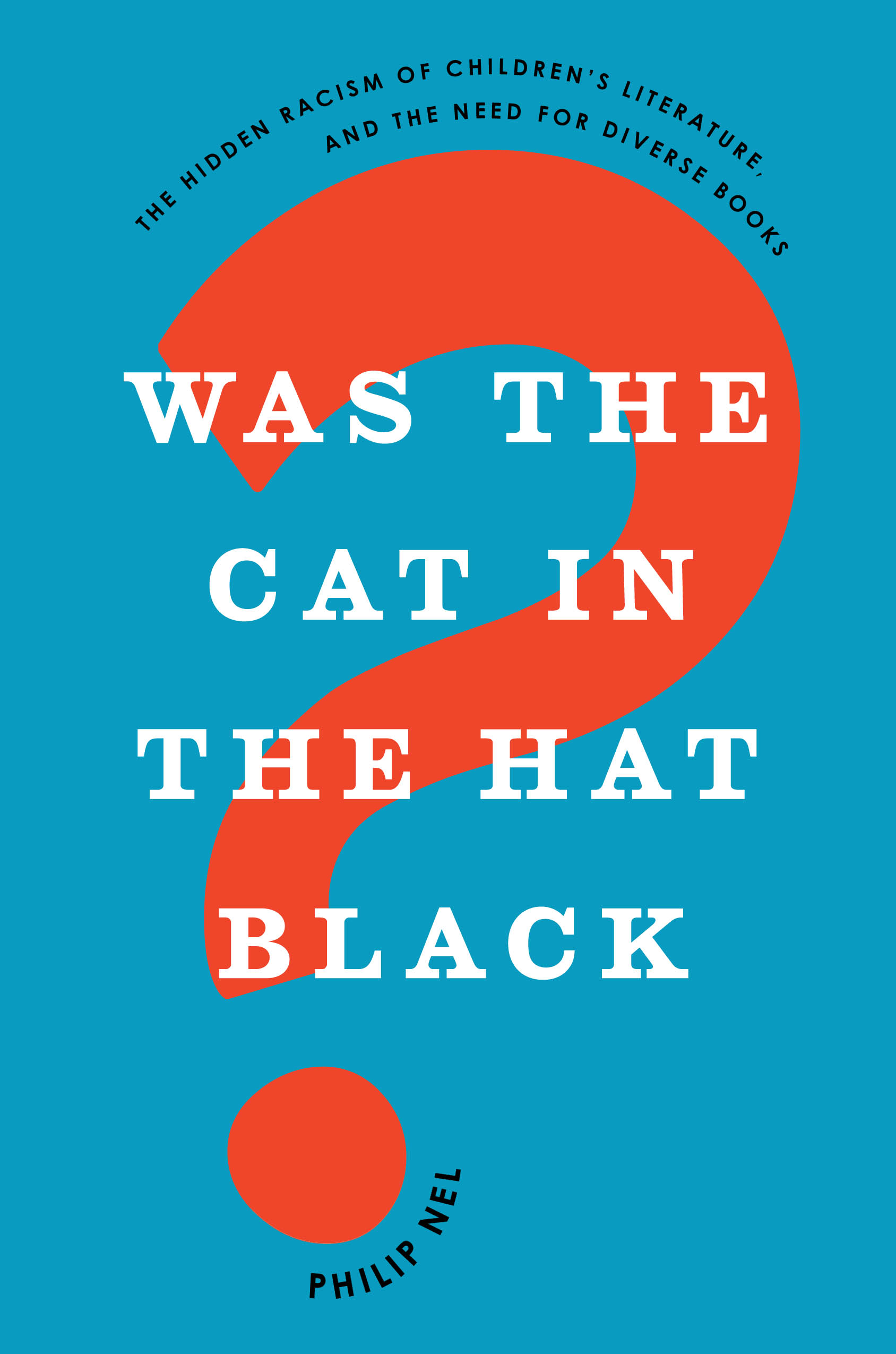 NOTE. A revised and expanded inquiry into this subject forms the Introduction (“Race, Racism, and the Cultures of Childhood”) to Was the Cat in the Hat Black?: The Hidden Racism of Children’s Literature and the Need for Diverse Books (Oxford UP, 2017), pp. 1-30.
NOTE. A revised and expanded inquiry into this subject forms the Introduction (“Race, Racism, and the Cultures of Childhood”) to Was the Cat in the Hat Black?: The Hidden Racism of Children’s Literature and the Need for Diverse Books (Oxford UP, 2017), pp. 1-30.
I did not call them “stuffed animals.” I called them “fellows,” allegedly because, seeing my stuffed animals lined up along the foot of my bed, my mother remarked, “That’s a funny-looking bunch of fellows you have there.” So, stuffed animals became fellows.
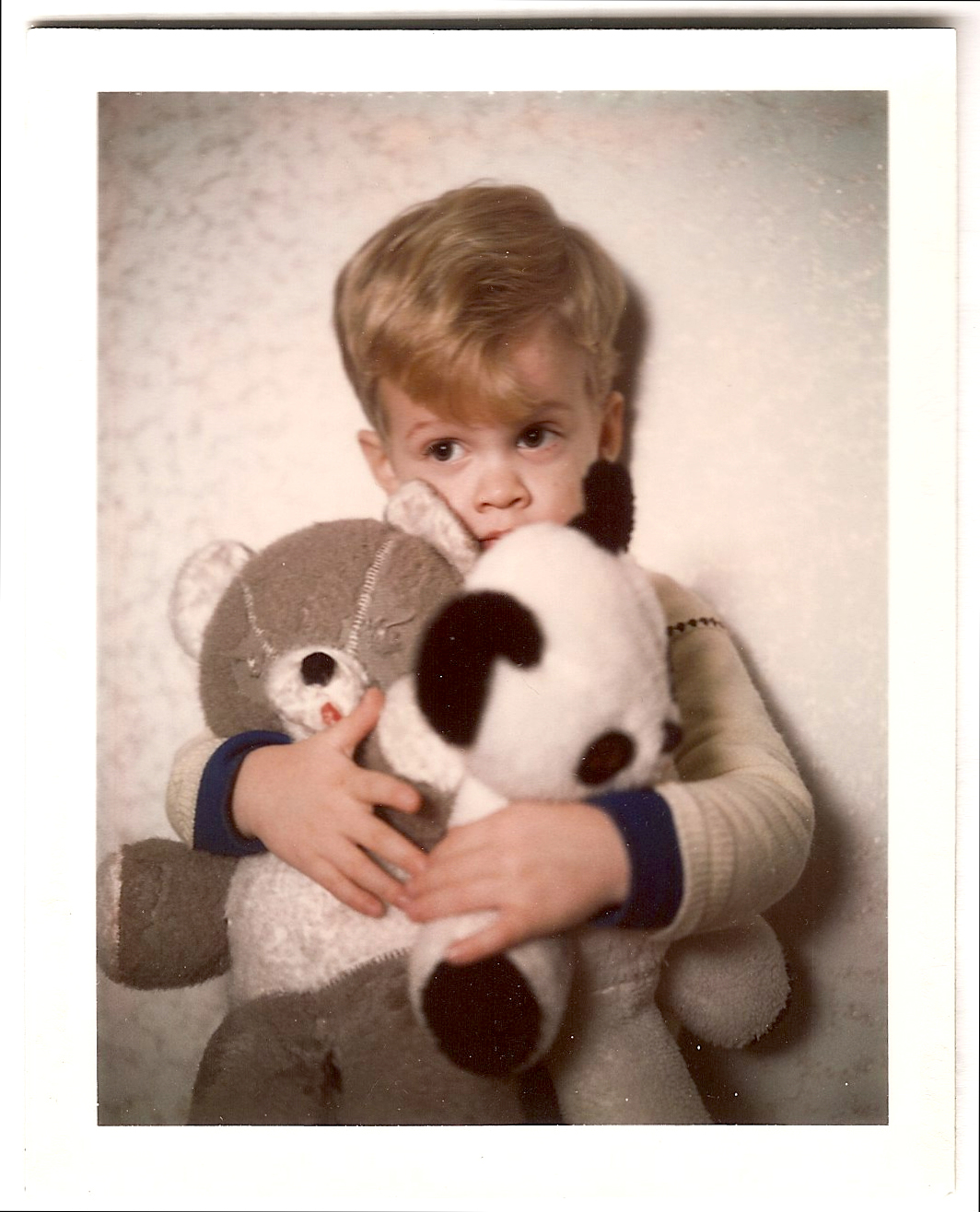 It’s a curiously appropriate term. I was a shy child, and these fellows were my confederates. They were my friends, each with a unique personality. Except for Golly. Nutty Squirrel (who, oddly, was bright red) was bouncy, friendly, slightly unhinged. Gary (a dog whose name was an anagram of his gray color) was friendly, and a little boisterous in a dog-like way. Teddy and Panda were my close friends and confidants. In contrast, Golly was none of the above. To me, Golly’s face was a blank mask, its gender indeterminate, and its humanity doubtful.
It’s a curiously appropriate term. I was a shy child, and these fellows were my confederates. They were my friends, each with a unique personality. Except for Golly. Nutty Squirrel (who, oddly, was bright red) was bouncy, friendly, slightly unhinged. Gary (a dog whose name was an anagram of his gray color) was friendly, and a little boisterous in a dog-like way. Teddy and Panda were my close friends and confidants. In contrast, Golly was none of the above. To me, Golly’s face was a blank mask, its gender indeterminate, and its humanity doubtful.
That I saw this racist doll as unconnected to race or even human beings specifically is telling. It’s a great example of how racial ideologies can hide in plain sight, but it also offers some insight into what children see or don’t see. As an adult, I look at Golly, and the racial caricature makes me feel queasy; I feel ashamed at having grown up with a racist doll. As a child, I looked at Golly and saw only Golly – a claim that illustrates the efficient invisibility of ideology. The idea that I “saw only Golly” neatly conceals the fact that I was, unawares, absorbing messages about race and power, and, that in its otherness, this doll was affirming my own whiteness as normal. Then, I had no sense that this doll was derived from minstrelsy, or something that I should not be harboring. Golly was just Golly. When I got a second Golly, which (like the first) was a handmade gift from a South African relative, I remember thinking: Oh. Now I have two of my least favorite fellows.
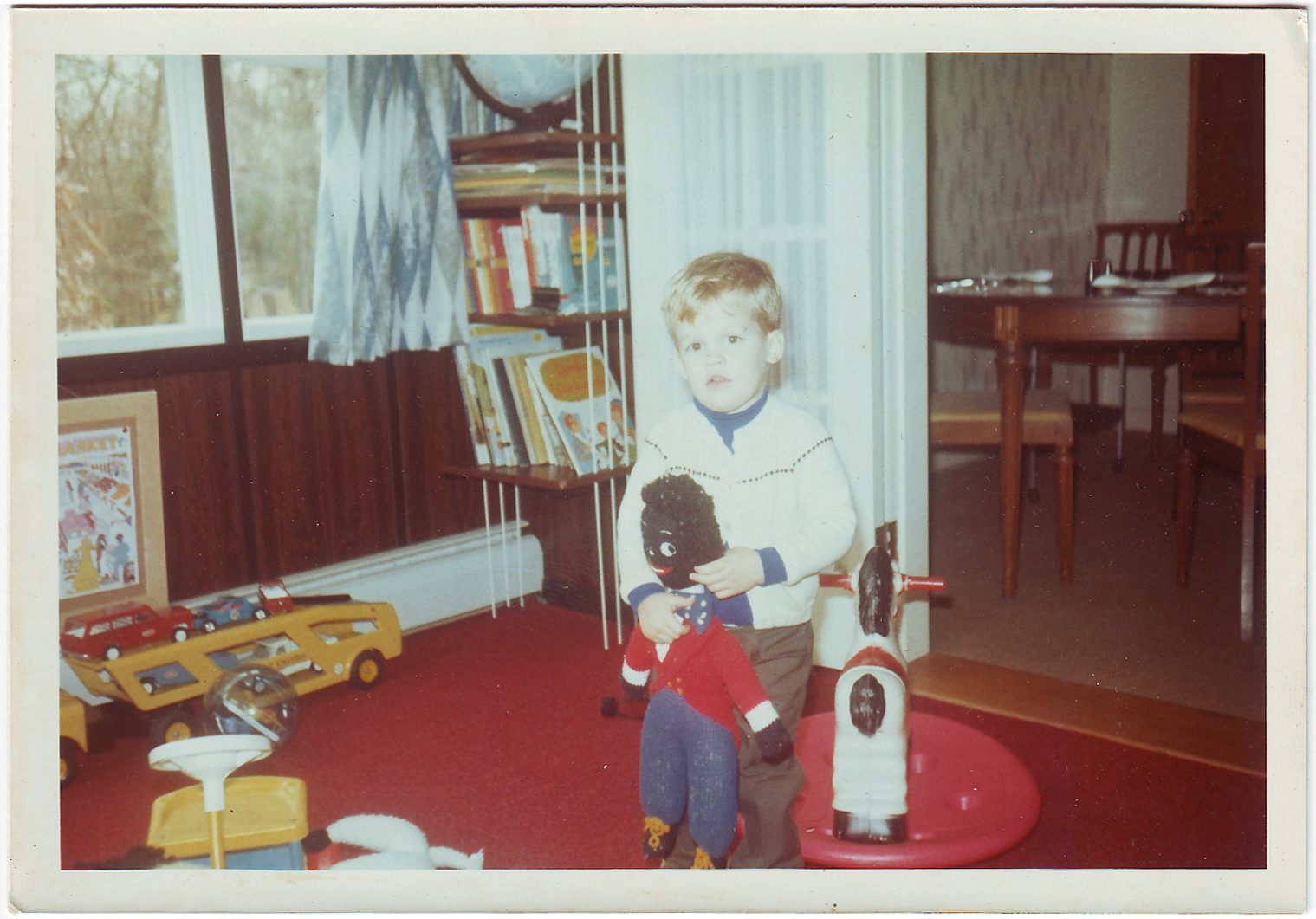
As these photographs suggest, I had a warmer, more emotionally intimate relationship with Teddy and Panda, but a cooler, distant relationship with Golly. Aged 3, I hold Teddy and Panda close, shyly peering out over their heads. Contrast that full and loving embrace with my casual, almost careless hold on Golly. One hand cannot bring itself to close around his bow-tie; two fingers from the other hand consent to touch his hair. I regularly hugged and cuddled Panda and Teddy. They slept by my side each night. I tolerated the Gollies. If all the fellows were invited to a party, then the Gollies would of course be included. It would have been rude to omit them. But that’s it. They were invited out of obligation, not affection. With their black faces, bright red lips and manic grins, the Gollies lived in internal exile among the better-loved fellows. They were more things than friends.
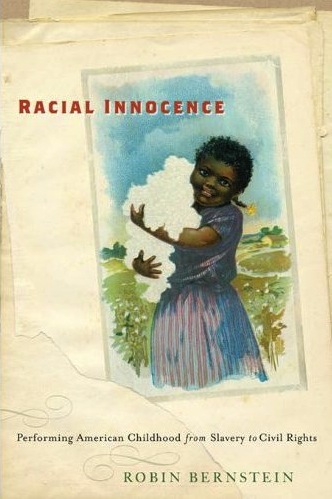 Their thingness, however, may explain why I responded as I did. Distinguishing between objects and things, Robin Bernstein writes in Racial Innocence, “An object becomes a thing when it invites people to dance” (73). If, as Bernstein suggests, a doll is a “scriptive thing,” then my Golly prompted certain “meaningful bodily behaviors” (71), revealing a “a script for a performance” (72). This does not mean that all who played with a Golly would interact in precisely the same way, but rather that the doll invites certain kinds of play, and that children can accept, reject, or revise those invitations. For me, my Gollies largely elicited polite indifference. I didn’t play with either Golly much. I never even gave the second Golly a name of its own. Though soft, my Gollies didn’t inspire me to cuddle them. However, my mother (who grew up in 1940s South Africa) remembered that she did cuddle her childhood Golly. As a soft doll, the Golly does script cuddling.
Their thingness, however, may explain why I responded as I did. Distinguishing between objects and things, Robin Bernstein writes in Racial Innocence, “An object becomes a thing when it invites people to dance” (73). If, as Bernstein suggests, a doll is a “scriptive thing,” then my Golly prompted certain “meaningful bodily behaviors” (71), revealing a “a script for a performance” (72). This does not mean that all who played with a Golly would interact in precisely the same way, but rather that the doll invites certain kinds of play, and that children can accept, reject, or revise those invitations. For me, my Gollies largely elicited polite indifference. I didn’t play with either Golly much. I never even gave the second Golly a name of its own. Though soft, my Gollies didn’t inspire me to cuddle them. However, my mother (who grew up in 1940s South Africa) remembered that she did cuddle her childhood Golly. As a soft doll, the Golly does script cuddling.
Growing up in Massachusetts in the 1970s, I resisted that script because I found the dolls a bit creepy, even grotesque. On one level, I may have been – unconsciously – responding to the ugliness of the racial caricature. Golly is short for “Golliwog,” whose history dates to Florence Kate Upton’s children’s book The Adventures of Two Dutch Dolls and a Golliwogg (1895). Upton was born in Flushing, New York, but at age 14 – after her father’s death – moved with her mother and sisters back to England. Her parents were English. The character was based on a “blackface minstrel doll” she had played with as a child in the U.S. (Bernstein 159). As Upton would later recall, “Seated upon a flowerpot in the garden, his kindly face was a target for rubber balls… the game being to knock him over backwards. It pains me now to think of those little rag legs flying ignominiously over his head, yet that was a long time ago, and before he had become a personality…. We knew he was ugly!” (Pilgrim).
The book and the dolls were very popular in the U.K., which (I suspect) is how they got to South Africa. In the U.S., the Golliwog is not as widely recognized. As the Jim Crow Museum of Racist Memorabilia tells us, it’s “the least known of the major anti-black caricatures in the United States” (Pilgrim).
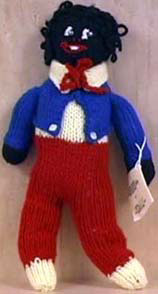 Given the doll’s relative obscurity in the U.S., blaming my cool response to the Gollies entirely on some unconscious awareness of their racist content is far too neat an answer. The Gollies were not only other because they were grotesque; they were also other because they were Black. Growing up in an all-white Massachusetts town, I had no friends or even acquaintances of color. Though there were then public policies promoting desegregation, America in the 1970s was – as it is now –Â a highly segregated place. I lacked friends of color until high school, a Connecticut prep school that made some effort to attract non-white students. My experience was and is not unusual. The Public Research Institute recently reported that a full 75% of whites have “entirely white social networks without any minority presence” (Ingram).
Given the doll’s relative obscurity in the U.S., blaming my cool response to the Gollies entirely on some unconscious awareness of their racist content is far too neat an answer. The Gollies were not only other because they were grotesque; they were also other because they were Black. Growing up in an all-white Massachusetts town, I had no friends or even acquaintances of color. Though there were then public policies promoting desegregation, America in the 1970s was – as it is now –Â a highly segregated place. I lacked friends of color until high school, a Connecticut prep school that made some effort to attract non-white students. My experience was and is not unusual. The Public Research Institute recently reported that a full 75% of whites have “entirely white social networks without any minority presence” (Ingram).
The Golly is not an anomalous artifact of the South African influence on my childhood. (My parents grew up in South Africa.) It’s not an isolated example of how racist culture crosses borders. It embodies the cultural pervasiveness of racism. A book from my childhood library, Walt Disney’s Story Land (Golden Press, 1974) includes Joel Chandler Harris’s “De Tar Baby,” “Adapted from the Motion Picture ‘Song of the South’” (172), featuring characters talking in “black” dialect. Of books that remain in print today, the Asterix comics, by René Goscinny and Albert Uderzo (1959-1979) and Uderzo solo (1980-2009), feature racial caricatures of most non-white characters: Native Americans in Asterix and the Great Crossing (1975), and Africans in Asterix and Cleopatra (1965). Random House’s Yearling imprint not only keeps Lynne Reid Banks’ The Indian in the Cupboard series (1980-1998) in print, but in 2010 relaunched them with new cover designs. More subtly, the influence of blackface minstrelsy lingers on in Raggedy Ann, Mickey Mouse, Bugs Bunny, and the Cat in the Hat. Racism’s legacy is everywhere, and it’s particularly tenacious in children’s literature and culture.
When I’ve brought my Gollies into class for discussions of racist children’s culture, I’ve half-jokingly described the experience as “a visit to the island of racist toys.” But they’re not an island. They’re the ocean. 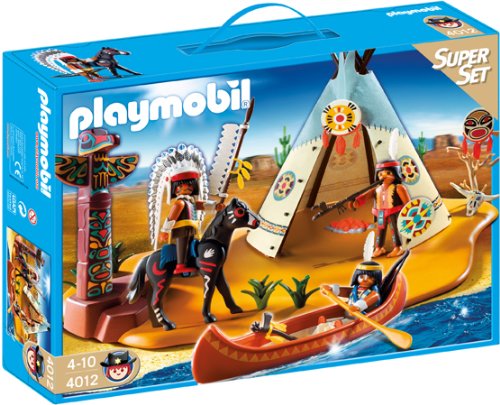 Though now called “Native Americans” instead of “Indians” (as they were in my youth), Playmobil’s depiction of non-white peoples traffics in stereotypes: in its toys, Native Americans all live in tepees and wear headdresses, and the sole “African / African American” family comes with a basketball. Or came with one. Playmobil recently discontinued this family. Very often, even imperfect representations of non-white people can be scarce. The “Black” version of the toy is either hard to find or simply doesn’t exist.
Though now called “Native Americans” instead of “Indians” (as they were in my youth), Playmobil’s depiction of non-white peoples traffics in stereotypes: in its toys, Native Americans all live in tepees and wear headdresses, and the sole “African / African American” family comes with a basketball. Or came with one. Playmobil recently discontinued this family. Very often, even imperfect representations of non-white people can be scarce. The “Black” version of the toy is either hard to find or simply doesn’t exist.
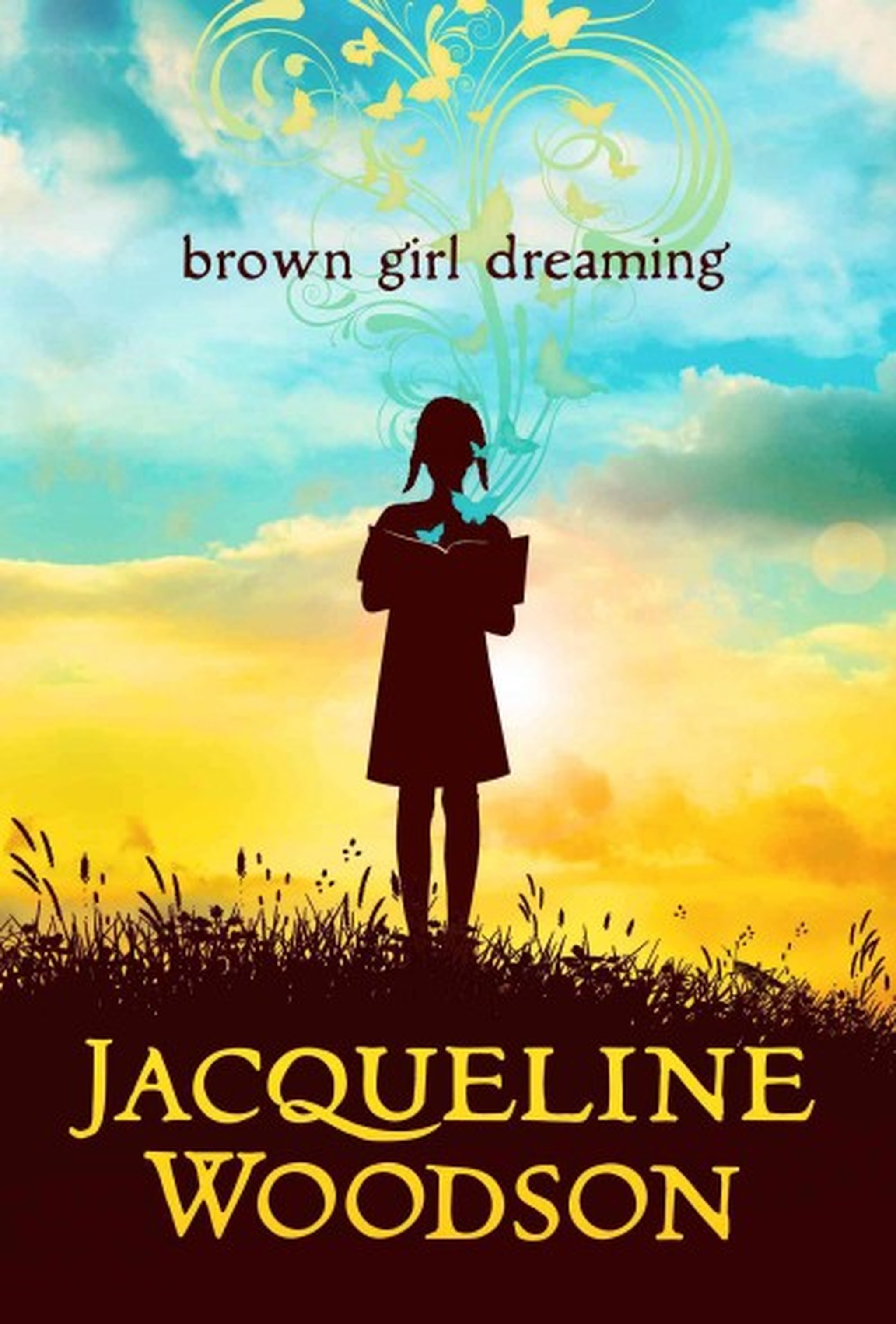 None of this is to deny the significant progress in the past 40 years. From Diana Ross and Michael Jackson in The Wiz (1978) to Quvenzhané Wallis in Annie (2014), from Virginia Hamilton’s M.C. Higgins, the Great (1975) to Jacqueline Woodson’s Brown Girl Dreaming (2014), children’s culture has developed more and better representations people of color. But improvement is not parity. Progress is not the same as equality.
None of this is to deny the significant progress in the past 40 years. From Diana Ross and Michael Jackson in The Wiz (1978) to Quvenzhané Wallis in Annie (2014), from Virginia Hamilton’s M.C. Higgins, the Great (1975) to Jacqueline Woodson’s Brown Girl Dreaming (2014), children’s culture has developed more and better representations people of color. But improvement is not parity. Progress is not the same as equality.
And that’s what whites who deny – or, to put it more kindly, fail to see – the persistence of structural racism need to learn. The petulant New York cops who turn their backs on Mayor de Blasio fail to understand that, just because they may not intend to be racist, the NYPD’s history of murdering unarmed people of color can not be dismissed as a statistical anomaly.
For those who find it far-fetched to fault racism in children’s culture (and popular culture more broadly) for the persistence of racist attitudes, I would argue that these images – especially those we encounter as children – have staying power. As Christopher Myers wrote, such images “linger in our hearts, vast ‘image libraries’ that color our actions and ideas, even if we don’t recognize them on a conscious level. The plethora of threatening images of young black people has real-life effects.”
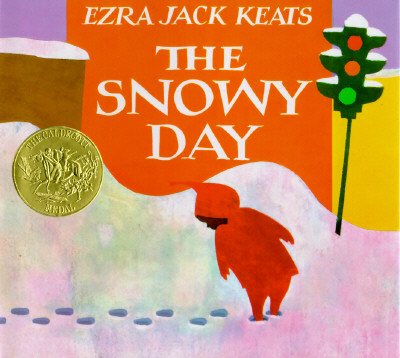 Writing those words just after Trayvon Martin’s murderer was found not guilty, Myers added, “I wondered: if the man who killed Trayvon Martin had read The Snowy Day as a kid, would it have been as easy for him to see a seventeen-year-old in a hoodie, pockets full of rainbow candies and sweet tea, as a threat? What might have been different if images of round-headed Peter and his red hood and his snow angels were already dancing in his head?”
Writing those words just after Trayvon Martin’s murderer was found not guilty, Myers added, “I wondered: if the man who killed Trayvon Martin had read The Snowy Day as a kid, would it have been as easy for him to see a seventeen-year-old in a hoodie, pockets full of rainbow candies and sweet tea, as a threat? What might have been different if images of round-headed Peter and his red hood and his snow angels were already dancing in his head?”
That is precisely why #WeNeedDiverseBooks, and why we need a wider range of toys, movies, and video games featuring protagonists of color. We need to counter the Gollies, the Uncle Remuses, and all the rest. What we learn as children shapes our world view more profoundly because, when we are small, we are still in the process of figuring out who we are and what we believe. For this reason, children’s toys, books, and culture are some of the most important influences on who we become – and on what biases we harbor.
Confronting those biases is hard and necessary work, but it’s nowhere near as hard as the psychic toll paid by those who endure the daily experience of racism. Indeed, it’s much easier for those of us not on the receiving end of racism to fail to see it, and to minimize its presence in our own lives. But exercising the privilege of choosing not to see leads to irresponsibility, to micro-aggressions, to unwittingly becoming part of a racist system.
The casual ignorance of well-intentioned people does more to sustain structural inequality than, say, those expressions of racism that get more media coverage – former L.A. Clippers owner Donald Sterling telling his mistress not to bring Black people to the games, or media mogul Rupert Murdoch alleging that all Muslims bear responsibility for the terrorist attack against Charlie Hebdo.
As Catherine R. Squires writes, “We pretend to our peril that racism is safely in our past” (16). Golly is an atypical feature of Caucasian-American childhoods, but racism is not. It’s in films, playground taunts, dolls, books, relatives’ remarks. It’s everywhere.
Works Cited
Bernstein, Robin. Racial Innocence: Performing Childhood from Slavery to Civil Rights. New York: New York University Press, 2011.
Ingram, Christopher. “Three quarters of whites don’t have any non-white friends.” Washington Post 25 Aug. 2014: <http://www.washingtonpost.com/blogs/wonkblog/wp/2014/08/25/three-quarters-of-whites-dont-have-any-non-white-friends/>.
Keats, Ezra Jack. The Snowy Day. 1962. New York: Puffin Books, 1976.
Myers, Christopher. “Young Dreamers.” Horn Book 6 Aug. 2013: <http://www.hbook.com/2013/08/opinion/young-dreamers/>
Pilgrim, David. “The Golliwog Caricature.” 2000, rev. 2012. The Jim Crow Museum of Racist Memorabilia. <http://www.ferris.edu/jimcrow/golliwog/>. Date of access: 4 Jan. 2014.
Squires, Catherine R. The Post-Racial Mystique: Media and Race in the Twenty-First Century. New York University Press, 2014.
Walt Disney’s Story Land: 55 favorite stories adapted from Walt Disney films. Racine, WI: Golden Press, 1974.
Related links on this site:
- “Archives of Childhood, Part 1: Crayons” (27 Dec. 2014)
- “#BlackLivesMatter – A Twitter Essay” (3 Dec. 2014)
- “On Reading the Expurgated Huck Finn; or, Why We Should Teach Offensive Novels” (17 Oct. 2014)
- “Ferguson: Response and Resources” (24 Aug. 2014)
- “Was the Cat in the Hat Black?” (22 June 2014)
- “‘The Boundaries of Imagination’; or, the All-White World of Children’s Books, 2014” (17 Mar. 2014)
- “Huckleberry Finn, Tom Sawyer, and Offensiveness” (5 Jan. 2011)
- “Can Censoring a Children’s Book Remove Its Prejudices?” (19 Sept. 2010)
I plan to include a much shorter excerpt of this piece in the introduction to my book, currently titled Was the Cat in the Hat Black?: Structures of Racism in Children’s Literature. Indeed, I wrote this personal essay to help me write the introduction. Criticisms, comments, suggestions for improvement and for further reading are all welcome. For that matter, if you’ve any suggestions on how much (if any) of this should be included, I’d welcome opinions there, too.

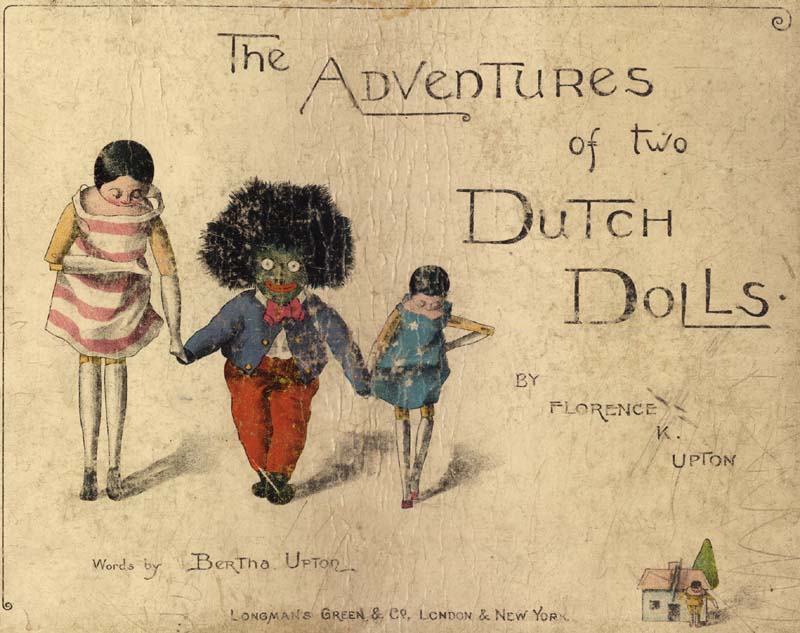
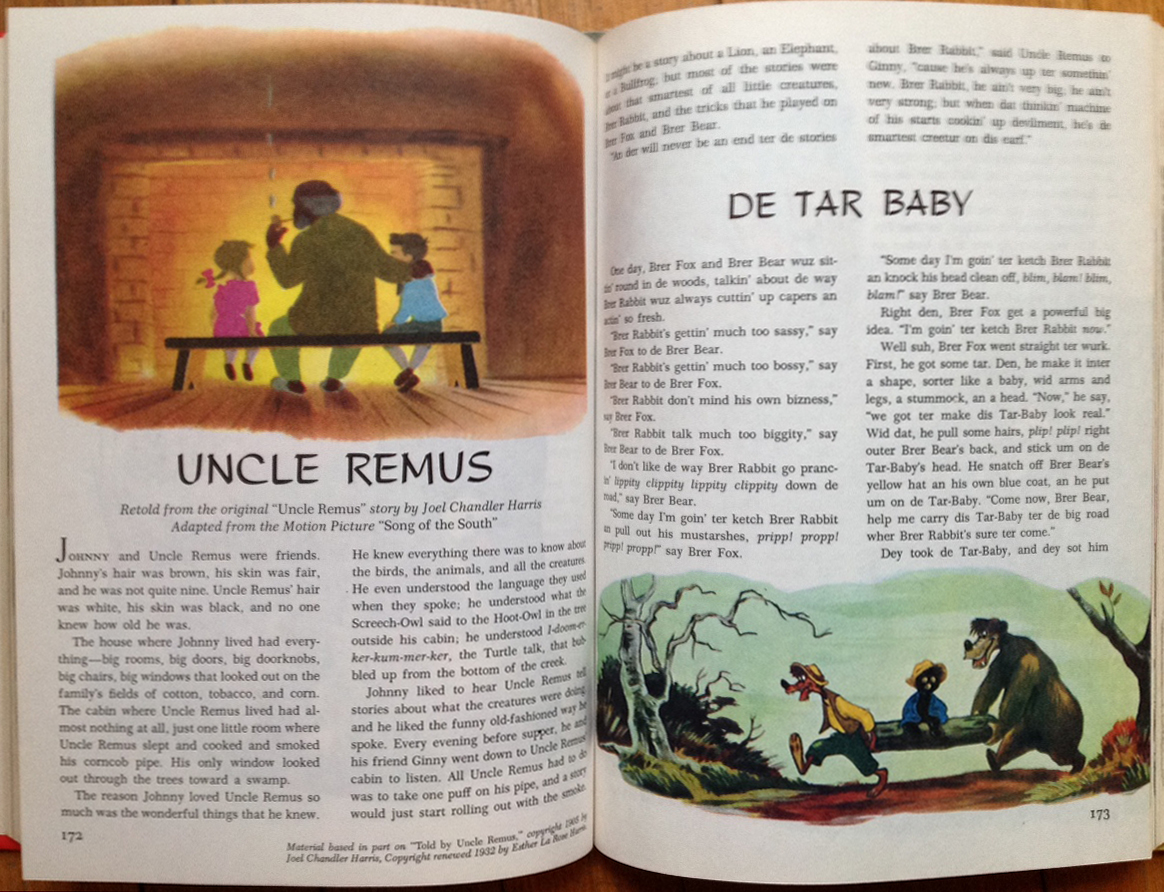
Debbie Reese
Philip Nel
Charles Hatfield
Charles Hatfield
Philip Nel
Debbie Reese
Philip Nel